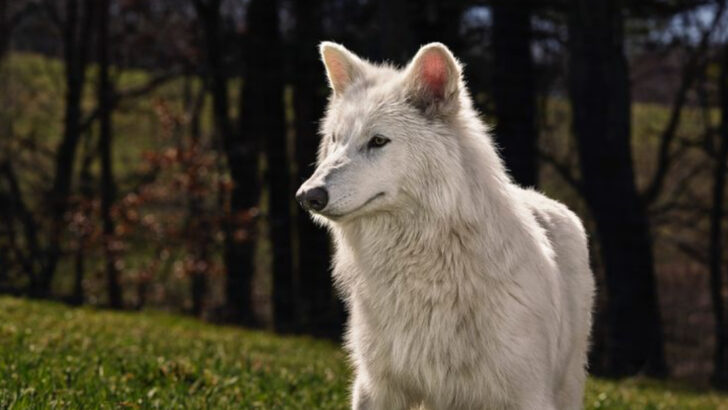Dire wolves and modern wolves might look like cousins, but their differences run deeper than most people realize. One ruled the Ice Age and vanished thousands of years ago, while the other still roams forests and tundras today. For years, scientists thought they were close relatives—until DNA told a very different story. Still, it’s hard to ignore how much they had in common, from pack hunting to fierce loyalty. Some traits helped one survive while the other disappeared. Understanding both helps us see just how wild and complex the world of wolves really is.
Dire Wolves Were Significantly Larger and More Robust
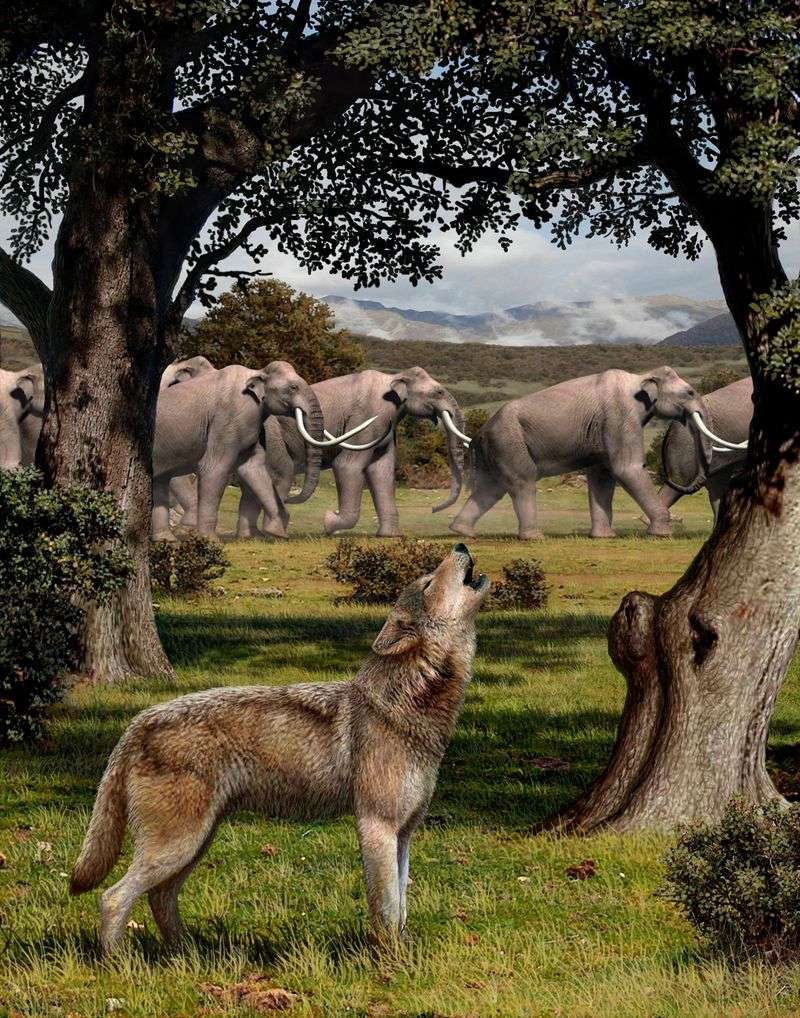
With a commanding presence, dire wolves towered over their modern relatives, weighing up to 150 pounds. Their formidable size and robust build were perfectly tailored for the harsh realities of the Ice Age. Strong jaws and a brawny frame made them formidable predators, capable of taking down large prey like bison and horses. These physical traits provided dire wolves with an edge in survival, defining their role in the ecosystem. Envision a dire wolf, a giant among canids, navigating the rugged terrain, its powerful form a symbol of strength and endurance.
Their Teeth Were Built for Bone-Crushing
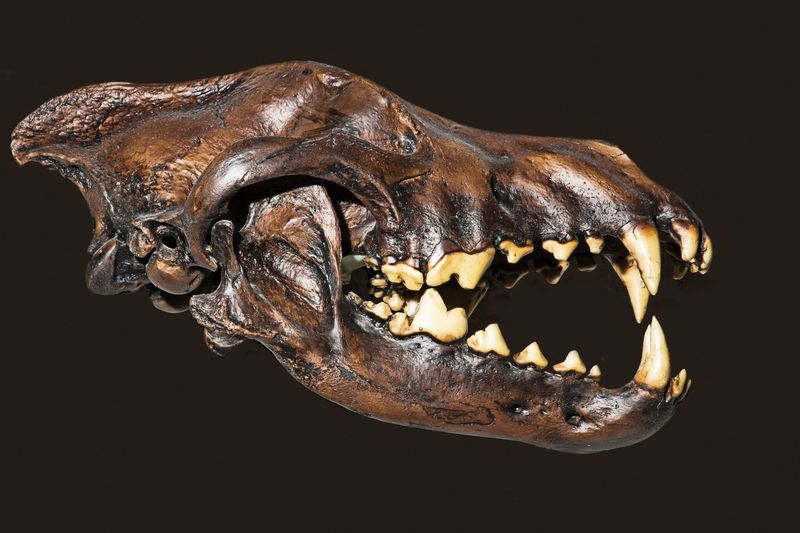
The dire wolf’s smile revealed a tale of survival, where broad, powerful jaws and large carnassials crafted a bone-crushing arsenal. Unlike their modern cousins, these wolves were equipped for a scavenger-heavy or megafauna-dependent diet. As nature’s efficient recyclers, their teeth were designed to break through dense bones, extracting vital nutrients. This adaptation hints at an ecosystem in flux, where the ability to exploit every resource became essential. Picture a dire wolf gnashing through a carcass, its teeth flashing as it thrives in a world of giants.
Dire Wolves Weren’t Actually Canis lupus
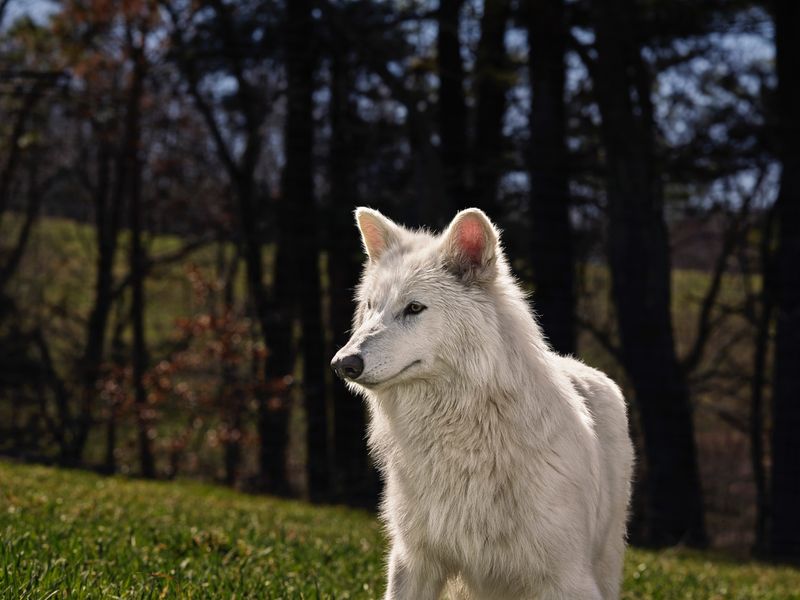
In a surprising twist of fate, DNA analysis in 2021 shattered the long-held belief that dire wolves were closely related to gray wolves. Instead, these enigmatic creatures branched off into a completely different evolutionary line over five million years ago. This divergence paints a vivid picture of nature’s intricate design, where two seemingly related species embark on separate journeys. The revelation adds depth to our understanding of the dire wolf’s unique identity. Imagine the majestic dire wolf, with its own genetic tapestry, roaming the ancient landscapes, a testament to the diversity of the natural world.
They Had a Narrower Habitat Range
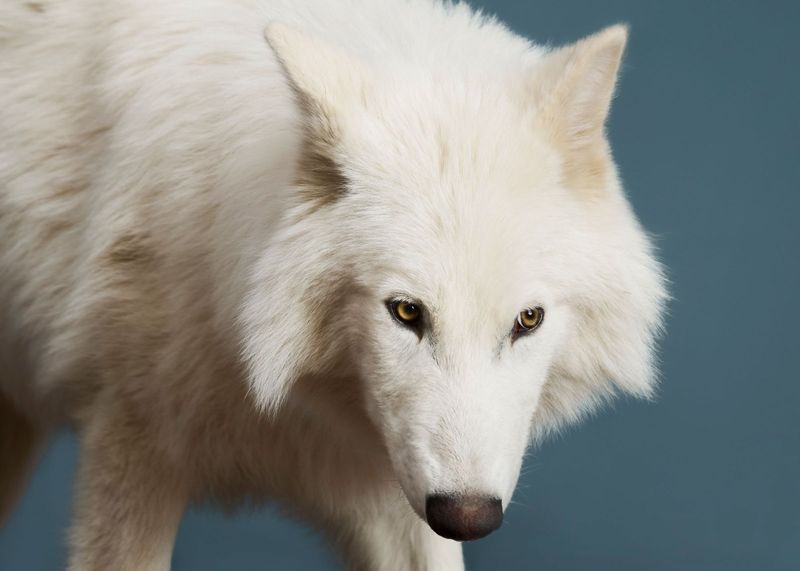
While gray wolves adapted to the vast reaches of Eurasia, their dire relatives found solace in the Americas. Predominantly in the southern U.S. and Central America, the dire wolf’s habitat tells of a specialized journey. This narrower range shaped their evolutionary path, isolating them from potential competitors and environmental challenges encountered by gray wolves. Imagine the dire wolf, a denizen of its unique domain, traversing landscapes marked by its presence, where each howl echoed through the Americas, a testament to its territorial identity.
Dire Wolves Likely Didn’t Interbreed With Other Canids
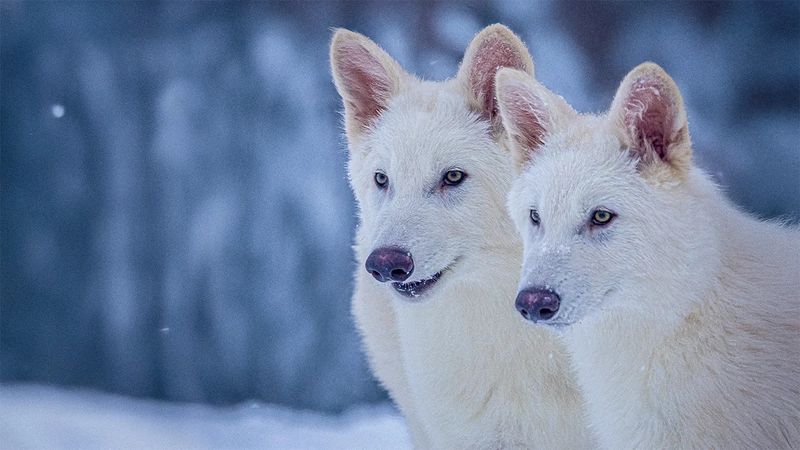
In the dance of evolution, dire wolves waltzed alone, unlike modern wolves, coyotes, and dogs, which often share genetic material. This isolation may have hindered their adaptability, rendering them vulnerable to the changing world. Genetic barriers kept dire wolves distinct, their lineages pure but inflexible. As the world evolved, this trait may have sealed their fate, highlighting the cost of exclusivity. Picture a dire wolf pack, genetically unique, yet unable to bend to nature’s shifting demands, its lineage a poignant reminder of evolution’s uncompromising rules.
Dire Wolves Vanished at the End of the Ice Age
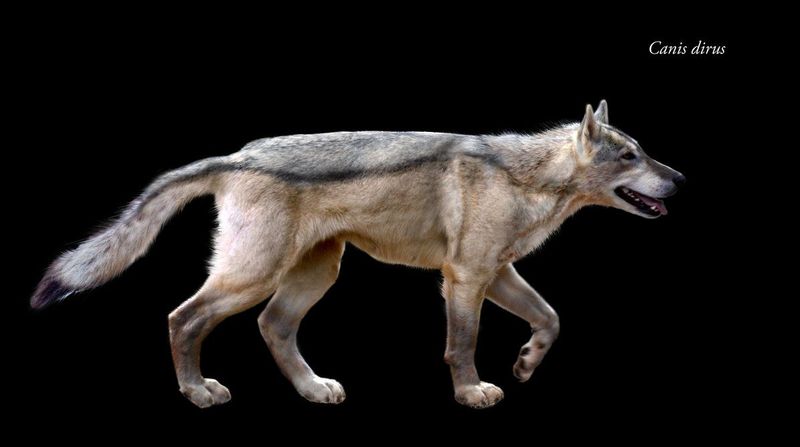
As the Ice Age’s curtain fell, dire wolves took their final bow, vanishing around 10,000 years ago. Climate change and the disappearance of large prey painted a bleak future for these majestic creatures. Their extinction story is a somber reflection on adaptability, where smaller, more versatile canids thrived. The dire wolf, once a symbol of power, succumbed to nature’s relentless march forward. Envision a dire wolf, standing amidst the ice, its breath fading into the cold air, a poignant symbol of nature’s ever-changing tapestry.
Both Hunted in Packs
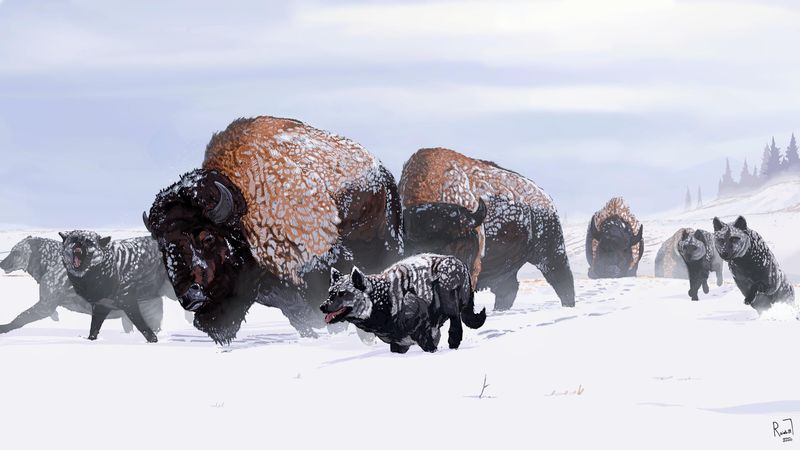
In the wild dance of survival, both dire and modern wolves embraced the pack life. Fossil sites like La Brea Tar Pits whisper tales of camaraderie, where dire wolves, like their modern kin, coordinated hunts to tackle formidable prey. This pack mentality forged a bond, allowing them to thrive. With a pack, each member played a role, their collective strength echoing through time. Imagine a pack of dire wolves, their eyes gleaming with purpose, moving as one across the landscape, a testament to the power of unity in the wild.
Social Hierarchies Likely Existed in Both
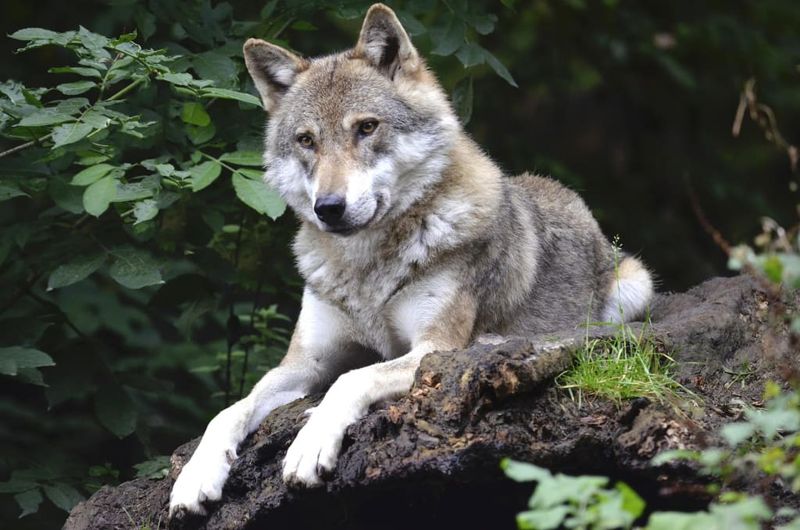
Injury patterns and tooth wear tell tales of structured society among dire wolves, hinting at alpha pairs and cooperative roles. This social fabric mirrored today’s wolf packs, where hierarchy dictates harmony. Such organization enhanced survival, allowing for coordinated strategies in hunting and protection. Picture a dire wolf pack, its members bound by invisible ties, each knowing its role, the hierarchy as strong as the pack’s collective will to survive. This echoes through time, connecting past and present in a web of social complexity.
Their Roles in the Ecosystem Were Nearly Identical
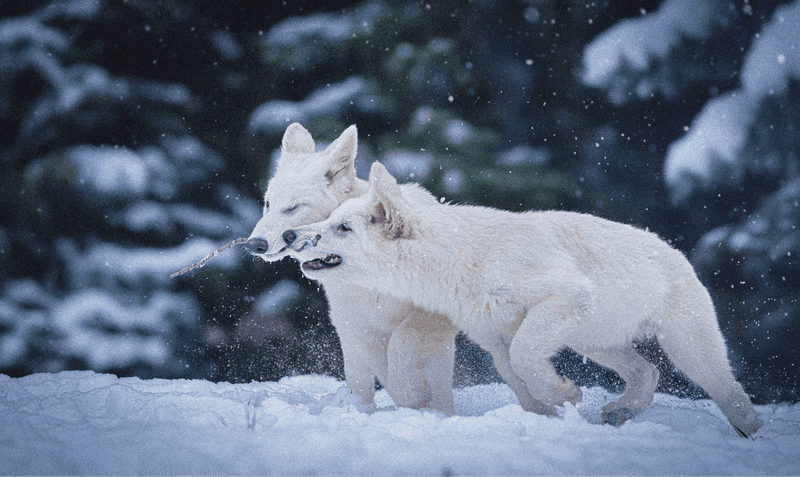
Despite their differences, dire wolves shared the mantle of apex predator with modern wolves. Both shaped their ecosystems, influencing prey populations and engaging in the timeless dance of competition. Saber-toothed cats and short-faced bears were their contemporaries, creating a dynamic balance. Imagine a dire wolf, its eyes scanning the horizon, a predator among predators, its presence a keystone in the Pleistocene ecosystem. This role, shared across millennia, underscores the universal language of survival where power and adaptability reign.
Body Structure Was Similar at First Glance
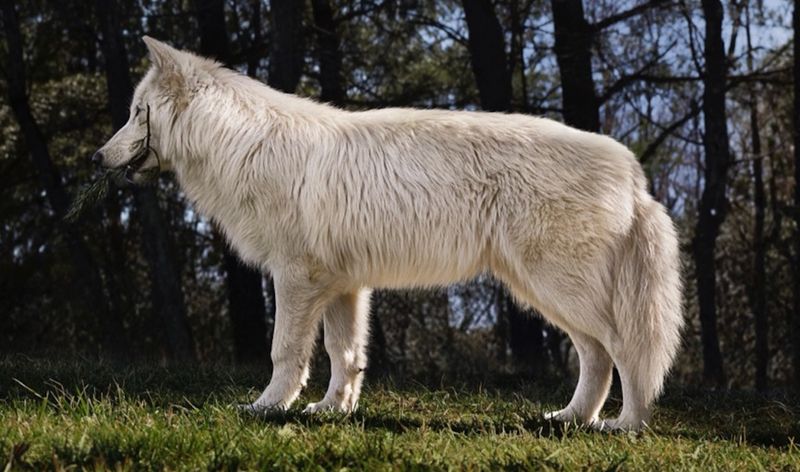
At a glance, dire wolves bore a striking resemblance to gray wolves, with large, bushy frames and wolf-like skulls. This visual similarity led to decades of mistaken identity, where the line between species blurred. Yet, beneath this likeness lay key skeletal differences, revealing their unique paths. Picture the scene: a dire wolf, its silhouette indistinguishable from its modern kin, yet carrying the whispers of its distinct lineage. This similarity in appearance belied the genetic and ecological tales that set them apart.
Both Used Scent and Vocalization to Communicate
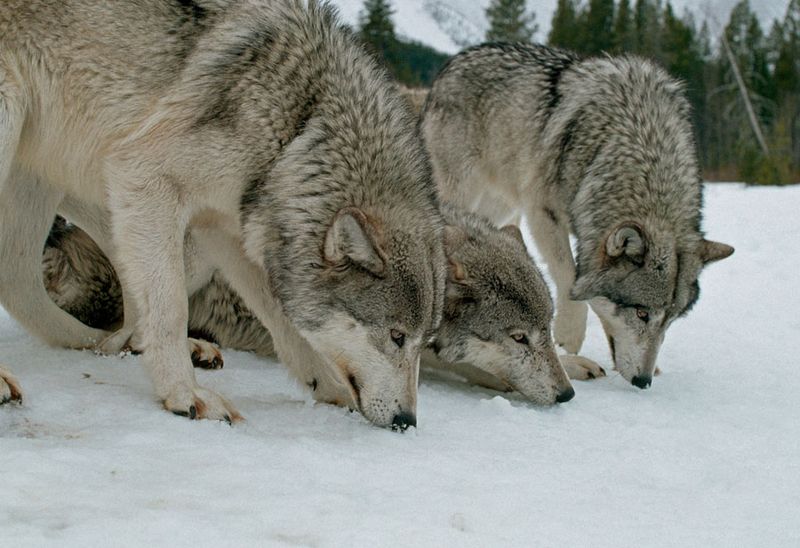
Though we can’t hear a dire wolf’s howl, their close relatives’ behavior suggests a symphony of scent and sound. These signals orchestrated hunts and marked territories, mirroring modern wolves. Such communication weaved a social tapestry, binding packs and defining boundaries. Picture a dire wolf, its voice a haunting melody in the night, its scent a message on the wind, both integral to its survival. This ancient language transcends time, echoing the bonds that knit wolves together, past and present, in the wild’s eternal rhythm.
They Shared a Common Ancestor—Just a Long Time Ago
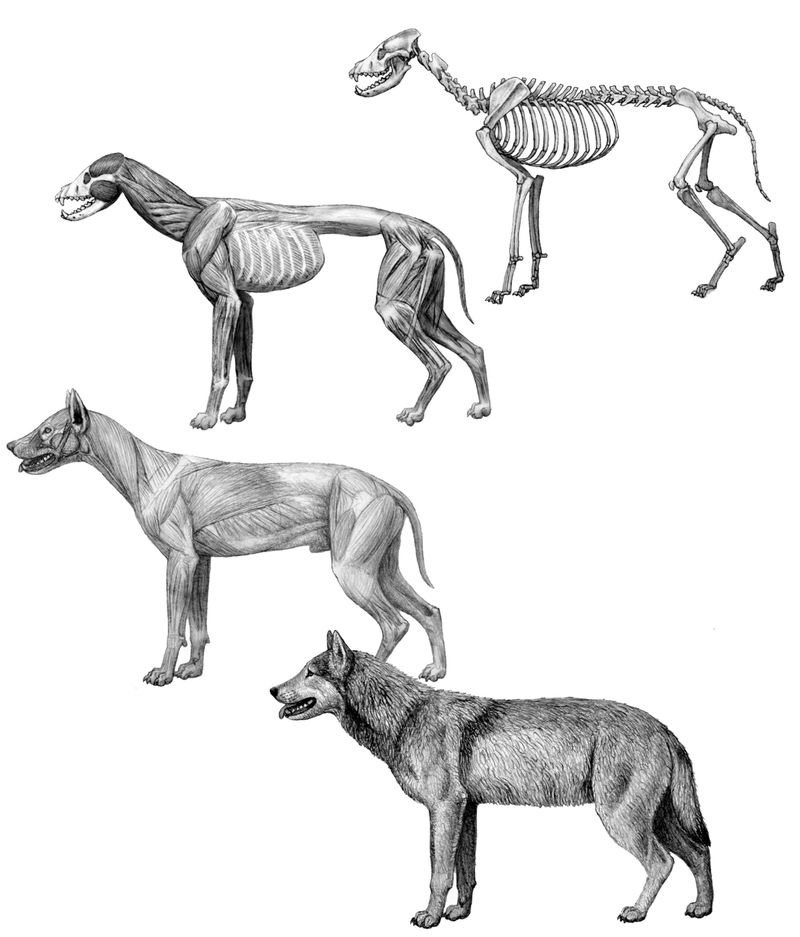
The evolutionary tale of dire and gray wolves begins with a shared ancestor, roaming the world eons ago. Though time and evolution drew them apart, their origins intertwine in the ancient past. This common lineage reveals nature’s blueprint, where diverse paths sprung from a single root. Imagine an ancient canid, standing at the crossroads of time, its progeny destined for different fates yet bound by origin. This shared ancestry underscores the intricate dance of evolution, where history and genetics converge in the vast tapestry of life.

